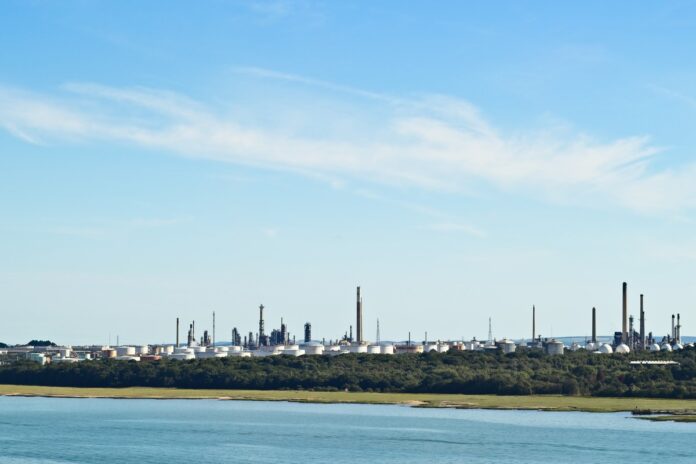When it comes to manufacturing success, the choice of industrial site location is significant. A correct location is essential for boosting production efficiency, streamlining operations, and reducing logistics cost. In the Philippines, it would become even more critical because accessibility, infrastructure, and labor availability are all considered in its criteria.
This site location can therefore be wisely selected to ensure easier production and maximized market coverage, making operations less difficult for the manufacturers. Every business trying to set a base or expand its activities in the country needs to consider the implications this decision brings to their eventual growth.
Importance of Industrial Site Location in Proximity to Raw Materials
Being close to raw materials saves time and money for transportation. This also allows the manufacturers to supply the shops at a reasonable level and not have to wait due to shortages. Additionally, the location close to suppliers helps facilitate logistics and reduces the possibility of facing supply shortages.
Site selection in the Philippines should be from which raw material access will easily be fetched since some may vary upon region difference. Operations are kept flowing without any interruptions or expenses for unnecessary things.
Access to Target Markets
Locating your industrial site close to key markets shortens delivery times. This improves customer satisfaction and allows for quicker responses to demand. In the Philippines, the proximity to major urban centers or export hubs can boost efficiency in distribution.
Choosing a site near shipping ports or main highways also reduces transportation costs. This not only speeds up product delivery but also strengthens your ability to compete in both local and international markets. Having easy access to your target market is essential for smoother operations and overall business growth.
Transportation Infrastructure
Efficient transportation networks are essential for moving goods quickly. In the Philippines, choosing an industrial site with access to reliable roads, ports, or airports reduces delays in shipping. Locations near major highways make distribution easier and faster. Having access to multiple modes of transport—like sea, air, and land—gives flexibility in handling logistics.
This ensures timely delivery of products, helping businesses meet deadlines and avoid extra costs. A strong transportation infrastructure also supports smoother operations and better connections with suppliers and customers.
Availability and Cost of Labor
The availability of skilled labor directly impacts production efficiency. In the Philippines, regions differ in labor supply and wage rates. Choose an industrial site where the workforce has the right skills for your operations. Areas with a larger pool of qualified workers can help you avoid delays in hiring.
Lower labor costs in certain regions can also reduce overall expenses. However, balance this with the need for quality workers who can handle the demands of the job. Access to affordable yet skilled labor is key to keeping production smooth and profitable.
Utility and Infrastructure Support
Reliable utilities are critical for keeping operations running smoothly. Industrial sites in the Philippines need consistent access to electricity, water, and telecommunications. Downtime from power outages or poor internet service slows down production and increases costs.
Choose a location with strong utility infrastructure to avoid disruptions. Make sure the site can handle your company’s needs, from energy demands to water supply. A reliable infrastructure keeps everything on track and prevents unexpected delays that could affect your overall efficiency.
Land and Facility Considerations
The size and cost of land impact your manufacturing operations. In the Philippines, industrial sites vary in price depending on the region. Look for locations that offer enough space for your current operations and future expansion. Zoning regulations matter too, so make sure the land is suited for industrial use.
Consider the proximity to essential services, such as maintenance or equipment suppliers. Selecting the right land ensures you can operate without restrictions and grow your business when needed. It also helps you avoid costly relocations or adjustments later on.
Regulatory Compliance
Adhering to local regulations is essential for smooth operations. In the Philippines, each region has specific industrial zoning laws and permits you must follow. Failing to comply with these regulations can lead to fines or legal issues that disrupt production. Make sure your chosen site meets all zoning requirements and safety standards.
Stay updated on any changes in local laws to avoid penalties. Choosing a location that aligns with regulatory expectations keeps your business on track and prevents costly delays.
Community and Economic Factors
The local community and economy affect how your business operates. In the Philippines, some areas offer more economic stability and growth potential than others. Choose an industrial site in a region with a supportive community and a strong local economy.
Local incentives like tax breaks or government support can also benefit your business. It’s important to consider the impact your operations will have on the surrounding community, as positive relationships can lead to smoother processes. A stable and thriving location helps ensure long-term success.
Key Takeaway
The choice of industrial site location significantly impacts the success of manufacturing in the Philippines. Factors such as proximity to raw materials and target markets enhance efficiency and reduce costs. Access to robust transportation infrastructure supports quick distribution and logistics management.
Availability of skilled labor and reliable utilities further contributes to smoother operations. Evaluating land costs and regulatory compliance helps avoid legal issues and ensures the site meets operational needs. Finally, community and economic factors play a significant role in long-term success.
